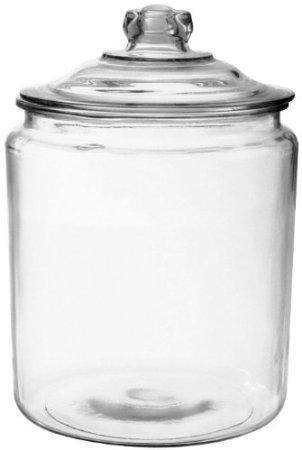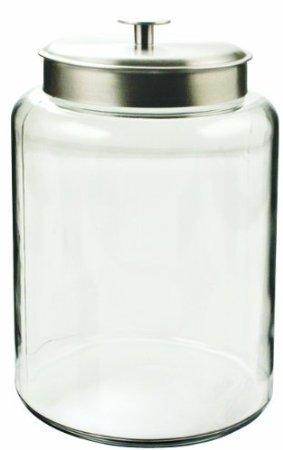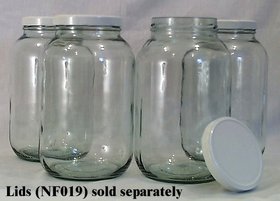
 15
15






 11
11




 Erica nails a lot of wonderfully key issues in her post. I especially appreciate her "par" approach. We're still developing our "par" here at base camp with fluctuation numbers of folks to feed, changes in cooks and food preferences, and still sourcing (not yet growing) a lot of our food.
Erica nails a lot of wonderfully key issues in her post. I especially appreciate her "par" approach. We're still developing our "par" here at base camp with fluctuation numbers of folks to feed, changes in cooks and food preferences, and still sourcing (not yet growing) a lot of our food.

QuickBooks set up and Bookkeeping for Small Businesses and Farms - jocelyncampbell.com






 5
5





QuickBooks set up and Bookkeeping for Small Businesses and Farms - jocelyncampbell.com





 4
4




Ask me about food.
How Permies.com Works (lots of useful links)







 5
5




Dayna Williams wrote:Jocelyn, what is "dry canning," and why don't you want to do it? Is it just putting them in a jar with an oxygen absorber?
QuickBooks set up and Bookkeeping for Small Businesses and Farms - jocelyncampbell.com
 4
4










 3
3




Rudy Valvano wrote: As you said, CO2 is heavier than O2, so they shouldn't mix if the lid is bumped. But a simple seal could be added with a rubber band and some contact cement. This could also keep out moisture, another cause of spoilage.
The oxygen might need to be removed after each time using the jar. I've seen prepper videos which use hand-warmers but are the chemicals safe so close to food?
Rudy Valvano wrote:I'm still getting the hang of these forums. Not sure if I can or should reply to a specific poster. Tech v.s. social learning curve.

QuickBooks set up and Bookkeeping for Small Businesses and Farms - jocelyncampbell.com

 8
8




Owner, Etta Place Cider
 2
2




Jocelyn Campbell wrote:
I'd love to hear what other people do to keep large quantities of whole grains fresh over long-term pantry storage.
Windward Sustainability Education and Research Center
Permaculture Apprenticeships at Windward
America's First Permaculture Cemetery? Herland Forest Natural Burial Cemetery











Ask me about food.
How Permies.com Works (lots of useful links)







 3
3




Jocelyn Campbell wrote:Paul and I want our food stored in glass (preferred) or plastic containers ASAP after purchase to reduce bug and rodent temptation.
QuickBooks set up and Bookkeeping for Small Businesses and Farms - jocelyncampbell.com
 2
2




 1
1




 2
2




If no one from the future comes to stop you is it really that bad of a decision?







 5
5




Owner, Etta Place Cider
 2
2




Do it.
 1
1




 1
1




Jocelyn Campbell wrote:
Going forward, and to be husp appropriate, we do not want plastic. I should have been more clear about that.
Windward Sustainability Education and Research Center
Permaculture Apprenticeships at Windward
America's First Permaculture Cemetery? Herland Forest Natural Burial Cemetery
 2
2




Do it.







 3
3




Owner, Etta Place Cider






 3
3




Ann Torrence wrote:This thread is starting to sound like solutions in search of a problem. Whole grains come with their own natural storage capsules. Don't grind up too much at once. Keep the whole grains cool, dry and pest-free and they will be fine for a year or two, quite possibly longer (with the possible exception of brown rice-I don't know why). Grow more in the interval.
Unless you are stock-piling for the zombie apocalypse, the grains will last just fine as long as it takes to turn them over in your pantry.
QuickBooks set up and Bookkeeping for Small Businesses and Farms - jocelyncampbell.com











Jocelyn Campbell wrote:Do you grind your own polenta and cornmeal, too?
Jocelyn Campbell wrote:
I like the brainstorming about how to store in containers that aren't plastic: glass, metal, pottery, wood. Displacing the air makes sense to me if it will be super-easy to do and as part or our normal "par" pantry stock rotation. (And to free up freezer space for more perishable items.) I think we'd only employ apocalyptic storage methods if we encounter some type of bargain or surplus that requires more than a year of storage before it will be used in normal pantry rotation.
Owner, Etta Place Cider
 5
5




 3
3




"I - am a thoughtful guy. I think alotta thoughts; about alotta things." Rhett and Link
 3
3




"You must be the change you want to see in the world." "First they ignore you, then they laugh at you, then they fight you, then you win." --Mahatma Gandhi
"Preach the Gospel always, and if necessary, use words." --Francis of Assisi.
"Family farms work when the whole family works the farm." -- Adam Klaus






 2
2




Ann Torrence wrote:The most important tool in my arsenal is a good canning jar funnel or three for repackaging day. I have one like this one (sadly plastic) that straddles the rim of the jar and is really stable when pouring awkward stuff into the jar. I haven't seen a similar one in steel, which I would prefer.



QuickBooks set up and Bookkeeping for Small Businesses and Farms - jocelyncampbell.com
 1
1




"You must be the change you want to see in the world." "First they ignore you, then they laugh at you, then they fight you, then you win." --Mahatma Gandhi
"Preach the Gospel always, and if necessary, use words." --Francis of Assisi.
"Family farms work when the whole family works the farm." -- Adam Klaus

 2
2




Jocelyn Campbell wrote:
Ann Torrence wrote:<snip a bunch of good stuff>
We don't have a lot of earthquake risk that I know of (being plenty far away from Yellowstone), though I do understand the fragility of glass and less ability to stack is a concern.
Metal might be how we go for larger quantities, though hearing about seals not staying on metal cans means it might behoove us to do more research first.
Montana is one of the most seismically active States in the Union. Since 1925, the State has experienced five shocks that reached intensity VIII or greater (Modified Mercalli Scale). During the same interval hundreds of less severe tremors were felt within the State. Montana's earthquake activity is concentrated mostly in the mountainous western third of the State which lies within a seismic zone that also includes southeastern Idaho, western Wyoming, and central Utah.
"...specialization is for insects." - Lazarus Long
Universal Introduction to Permies
How Permies.com works






 2
2




QuickBooks set up and Bookkeeping for Small Businesses and Farms - jocelyncampbell.com







 1
1




Jocelyn Campbell wrote:
So you find the double-rim on that plastic one more stable than these stainless steel wide-mouth funnels (affiliate link) or compare price with the funnel at Pantry Paratus?
Jocelyn Campbell wrote:
Or this funnel with the strainer (affiliate link) or compare price with the strainer funnel at Pantry Paratus?
Jocelyn Campbell wrote:
I'm just thinking with 8 adults to feed on a daily basis - and counting! - we are looking at quantities far larger than quart or half-gallon mason jars. We're baking so much bread, pancakes, etc. these days that we are going through 1 to 2 gallon jars of flour each week. That's just flour. 1 or 2 gallon jars are looking to be the reasonable size for us in the house. I like the glass gallon jars (see pic next), though our cook prefers the wider access in the 2 gallon glass canisters I posted near the top of the thread.
Jocelyn Campbell wrote:
We've been looking at growlers, and we do save the glass gallon juice jugs, and we even spent some coin on a 5 gallon glass jar (for pickles or candy?) in an effort to find inert storage solutions.
Jocelyn Campbell wrote:Our back up pantry is in the garage office, which is kept wonderfully warm by one of our new rocket stove mass heaters. While we could move the back up pantry to the garage section of the building, which is NOT heated, that part actually gets quite HOT in the summer. The office is better insulated and somewhat shaded by the garage section, so it stays far cooler.
Jocelyn Campbell wrote:Metal might be how we go for larger quantities, though hearing about seals not staying on metal cans means it might behoove us to do more research first.
Owner, Etta Place Cider







 1
1




"...specialization is for insects." - Lazarus Long
Universal Introduction to Permies
How Permies.com works







 2
2




Ann Torrence wrote:
The longest lasting solution, most ergonomic, and the one that will grow with you when you have to pull that inevitable food handling permit, is to have a steel guy who does restaurant sinks fab you up something. It might end up being less to get a 3 bin container on wheels that holds sacks of flour and oatmeal or whatever in volume. Find the gaskets first and design around them! I was shocked at how cheap it was to get our island counter made. Might even be able to find someone local to barter some of it. We are talking some very simple welds. I wouldn't rule it out without asking around.
Ask me about food.
How Permies.com Works (lots of useful links)







 1
1




Ann Torrence wrote:
I haven't seen a flour pump and I'm not asking anyone on my payroll to lift that kind of weight in something breakable. Talk about a workers' comp claim waiting to happen. I worry about you guys losing the ranch to some crazy liability claim.
Ann Torrence wrote:I still think old-fashioned milk cans might be the way to go for larger quantities. There's a 10 gal unit with a rubber gasket on EBay right now for $83. (this link will probably die an ungraceful death at some point).
QuickBooks set up and Bookkeeping for Small Businesses and Farms - jocelyncampbell.com





J.O.T, DYI level 7.5, Maker of stuff and curmudgeon in training
 1
1




Pecan Media: food forestry and forest garden ebooks
Now available: The Native Persimmon (centennial edition)




Sadly those cheap popcorn and cookie tins are not pest-proof as you find them. They have a crimped seam that's fairly open (these buckets often do not hold water, and the contents are usually shipped in cellophane inside the buckets to prevent staleness). I found this out the hard way once, storing a big batch of Chex-mix in one of the tins and having it get infested with lightning speed by some kind of weevils.
J.O.T, DYI level 7.5, Maker of stuff and curmudgeon in training






 1
1




QuickBooks set up and Bookkeeping for Small Businesses and Farms - jocelyncampbell.com




Nerds be nerding...
 1
1





|
Hot dog! An advertiser loves us THIS much:
The new gardening playing cards kickstarter is now live!
https://www.kickstarter.com/projects/paulwheaton/garden-cards
|







